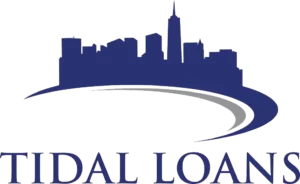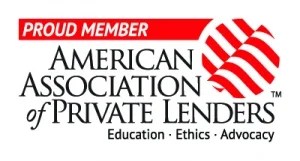Ever wondered how businesses get the money they need to grow? Understanding commercial loans is key for both new and established companies. Let’s explore the world of commercial loans. We’ll break down the complex parts and focus on the important elements that can make or break a business.
A commercial loan is a way for a business to get money from a bank or other lender. It’s used for many things like buying equipment or real estate. These loans are usually short-term but can be renewed. They help businesses manage their cash flow and grow.
Key Takeaways
- Commercial loans can range from small business loans to larger loans targeted at more extensive businesses.
- They can be structured as term loans, business lines of credit, or even merchant cash advances.
- Loan amounts, repayment terms, interest rates, and qualification criteria may vary widely depending on the lender and loan type.
- Collateral requirements might differ, with traditional lenders generally seeking more security compared to online lenders.
- Commercial loans come with various fees, including application, origination, and maintenance fees.
Introduction to Commercial Loans
Commercial loans are key for businesses, helping with cash flow, growth, or daily costs. As companies expand, they need more money. Let’s explore what a commercial loan is and why it’s important.
What Is a Commercial Loan?
A commercial loan is a deal between a business and a bank. It’s for big purchases or daily costs. Simply put, it’s borrowing money for needs a business can’t pay for right away.
These loans often need something valuable as collateral, like property. The interest rates match the prime lending rate. This makes them both useful and carefully watched. They help with everything from buying equipment to real estate.
Purpose of a Commercial Loan
The main goal of a commercial loan is to help businesses grow without money problems. They cover big expenses that need a lot of money. This way, companies can avoid rules that limit bond and equity access.
These loans are usually short-term but can be extended. This flexibility is great for ongoing costs. It keeps businesses running smoothly and growing steadily.
Knowing about commercial loans helps understand how businesses grow. Next, we’ll look at the different types of commercial loans and what they need.
Types of Commercial Loans
When looking for business financing, knowing the different commercial loans is key. Each loan type has its own use and terms. It’s important to pick the one that fits your business needs. Here’s a look at the various commercial loans available.
Term Loans
Term loans are very common. They usually have repayment terms from one to five years. These loans help buy assets or meet operational needs.
Short-term Loans
Short-term loans are for quick funding needs and are paid back in a year. They’re great for managing cash flow or grabbing quick opportunities.
SBA Loans
SBA loans are backed by the Small Business Association. They offer good terms for business owners. The SBA 7(a) loan supports many needs, like real estate and working capital. SBA 504 loans help buy major assets. The SBA microloan program offers up to $50,000 for small needs. For more on SBA loans and credit scores, click here.
Equipment Loans
Equipment financing is for buying new or used business equipment. These loans use the equipment as collateral. They’re a good choice for businesses looking to grow or upgrade.
Commercial Real Estate Loans
Commercial real estate loans are for buying, developing, or refinancing property. They come in types like permanent loans and bridge loans. These meet specific real estate needs.
Business Lines of Credit
A business line of credit offers flexible funding. Businesses can borrow up to a set limit and only pay interest on what’s used. It’s great for regular expenses or unexpected costs.
Merchant Cash Advances
Merchant cash advances give upfront funds based on future credit card sales. They’re good for businesses with lots of card sales but can have high costs.
Knowing about these commercial loans helps you choose the best financing for your business. Whether it’s for real estate or equipment, picking the right loan is crucial for growth and stability.
Commercial Loan Requirements
Knowing the commercial loan qualifications can really help your business get a loan. Here’s what you need to know:
Credit Rating
A high business credit score is key. Lenders want a score of 670 or more. This shows you’ve borrowed and paid back responsibly. Keeping your credit score up is important for getting a loan and good terms.
Financial Statements
Lenders need detailed financial documentation. This includes income statements, balance sheets, and tax returns. These show your business’s financial health and ability to pay back the loan. Make sure your financial statements are accurate and complete; mistakes can cause your loan to be denied.
Collateral
Most commercial loans need loan security. This can be real estate, equipment, inventory, or future payments. It helps lenders feel secure about lending to you. The type and value of collateral can change your loan’s interest rate and repayment time.
“Accuracy and documentation are essential when applying for commercial loans to avoid loan denial.”
Commercial loans can be complex. It’s smart to prepare well before you apply. Good preparation can lead to approval and better loan terms. Remember, different lenders have different needs. Knowing this can help you stand out.
Commercial Loan Rates
Knowing about commercial loan interest rates is key for businesses. These rates are based on the prime lending rate, now at 7%. This rate is a standard for banks to set their commercial loan rates.
Commercial loan interest rates can change a lot. They usually range from 3% to 20%. For example, NerdWallet says the average rate in the U.S. is between 2.2% and 18%. Most rates are around 4% to 5%.
These rates depend on the loan-to-value ratio (LTV), loan size, and whether the rate is fixed or variable. Fixed rates are steady, while variable rates change with financial market trends.
Businesses can choose from different commercial loans, each with its own rates. SBA loans, for instance, range from 5.50% to 10.50%. Construction loans can go up to 14.50%, showing the unique risks involved.
To keep up with the cost of borrowing, businesses should check financial advisory sites like ValuePenguin and MerchantMaverick. This helps them find the best deals and lower their borrowing costs.
Having a good credit score, offering solid collateral, and watching financial market trends can help get better loan rates. Using these tactics can make financing more affordable and help businesses grow.
Businesses can get better commercial loan rates by improving their credit scores, looking at different loan options, and negotiating well.
Commercial Loan Application Process
The commercial loan application process can seem daunting. But breaking it down into steps can make it simpler. Lenders look at business and personal credit history, financial statements, and other details to decide if you’re eligible. It’s important to prepare detailed financing paperwork and a list of documents for lending well.
Step-by-Step Guide
Knowing the steps in a commercial loan application can help:
- Pre-qualification: Lenders first check if your business is eligible based on a quick look at your financials and credit.
- Submission of Application: You fill out the loan application and send it in with the needed documents.
- Underwriting: Lenders do a deep dive into your financials, credit history, and industry comparisons using special software.
- Approval or Denial: They then decide. If you’re approved, they’ll outline the loan terms, conditions, and fees in a term sheet or proposal.
- Funding: After final approval, the money is given to you according to the agreed terms.
Documentation Needed
The documents needed for lending can vary, but here are some common ones:
- Financial Statements: You’ll need year-end balance sheets and income statements for the last three years, plus the most recent financials and the previous year’s statements.
- Business Tax Returns: These are key for checking your income and business health.
- Personal Financial Statements: This info helps lenders see if you’re personally creditworthy.
- Business Plan: A detailed plan of your business’s vision, strategies, and financial outlook.
- Current Debt Schedules: To see what financial obligations you have now.
Having accurate and complete documents is key for a smooth loan application. Using automated loan systems can help with preparing and sending paperwork. Being organized and keeping in touch with your lender can avoid delays and get you approved faster.
How Does a Commercial Loan Work?
Commercial loans can be tricky to understand because of all the terms and conditions. They usually come in two types: term loans or revolving lines of credit. These loans help businesses buy property, equipment, or grow. Let’s break it down to make it simpler.
Loan Structure
The structure of a commercial loan depends on what you agree with the lender. Term loans give you a big sum upfront to pay back over time. You’ll get a schedule that shows how much you pay each month for interest and principal.
Revolving lines of credit let you take money as you need it. This is great for covering daily costs. The loan-to-value ratio is between 65% to 80%, matching the loan to the property’s value. Commercial real estate loans can last from five to 20 years.
Repayment Terms
Repayment terms for commercial loans vary a lot. They can be as short as one year or up to 25 years. For example, commercial real estate loans often have longer terms but might have penalties if you pay off early.
A good amortization schedule helps you pay off the loan bit by bit. The debt-service coverage ratio (DSCR) is also important. It means your business must have enough cash flow to cover the loan. This shows lenders you can pay back the loan.
Knowing these details helps you pick the best loan for your business. It ensures you have a clear payment plan and good loan terms. This knowledge helps you manage your finances better and plan for the future.
Choosing the Right Commercial Loan Lender
Choosing the right commercial loan provider is key. It’s important to know the differences between banks, credit unions, SBA lenders, and online lenders. Each type offers unique benefits and requirements that can impact your business’s success.
Banks
Banks are known for their wide range of financing options. They offer loans with good interest rates and long terms, perfect for big investments like equipment or real estate. But, banks need a strong credit score and detailed financial info. They’re best for established businesses looking for structured loans.
Credit Unions
Credit unions offer personalized service and possibly lower rates. They focus on their members and might have more flexible terms than banks. Their loans support local businesses, often at better rates because they’re non-profit.
SBA Lenders
SBA guaranteed loans are great for small businesses. They get help from the U.S. Small Business Administration’s guarantees. This lets businesses with moderate credit get funding. Loans have lower down payments and longer terms but need a detailed application.
Online Lenders
Online lenders are fast and convenient for business loans. They have quick approval, less strict rules, and flexible terms. While rates might be higher, their speed and ease make them appealing for businesses needing quick capital.
Commercial Loan Underwriting Process
Understanding the commercial loan underwriting process is key for businesses seeking funding. It involves a detailed check of several factors. These factors help determine if the borrower can repay the loan and the lender’s risk.
Key Factors in Underwriting
Several important factors are involved in the commercial loan underwriting process. These include:
- Loan underwriting criteria: Lenders set specific standards. They ensure the borrower’s finances and the property’s value match their risk level.
- Credit assessment: The borrower’s creditworthiness is checked through financial statements, credit scores, and past credit history.
- Lender’s risk analysis: Risk evaluation looks at net operating income (NOI), loan-to-value (LTV) ratio, and debt-service coverage ratio (DSCR). For example, an LTV ratio of 70% for a $650,000 property means a $455,000 loan. Lenders prefer higher cap rates (7% to 10%) for more affordable purchases.
- Borrower evaluation: This involves checking the borrower’s financial health, property management experience, and the property’s income potential. Data shows lenders often use a loan-to-value ratio to decide loan amounts, with 60% finding it crucial.
Lenders use strict credit checks and risk analysis to avoid problems. They look at debt-service coverage ratio (DSCR) to gauge default risk. A DSCR of 1.25 or higher is often required, showing financial stability.
The Role of Creditworthiness
Creditworthiness is crucial in the loan underwriting process. A good credit history and solid financial statements increase approval chances. The lender’s risk analysis depends on this credit information, along with DSCR and LTV. In 2019, the median DSCR was 1.25, with retail malls having the highest DSCR at 1.28, showing low default risk. Land purchases had the lowest DSCR at 1.20, indicating higher risk.
Thorough borrower evaluation, focusing on creditworthiness and financial stability, helps lenders make informed decisions. This leads to successful loan approval and reduces potential risks.
Calculating Commercial Loan Repayments
Knowing how to figure out commercial loan repayments is key for good financial planning. A helpful tool is the loan repayment calculator. It lets businesses see their future financial duties by looking at the loan amount, interest rate, and how long it’s for. With online calculators, you can get a clear monthly payment estimation.
Enter the loan amount, which can be from $250,000 to $5 million, and the interest rate, from 3% to 15%. Businesses can then see how much they’ll pay each month. This helps in planning their finances, making sure loan payments fit their cash flow.
Another important thing is the amortization calculation. It shows how much of each payment goes to interest and principal. Most commercial loans, lasting 5 to 20 years, have an amortization schedule. This schedule shows how payments are split, helping businesses track their progress and financial health.
Don’t forget about the debt service coverage ratio (DSCR). It shows if a borrower can repay the loan. A higher DSCR means better repayment ability, which can lead to better loan terms. Also, knowing the loan-to-value ratio (LTV) and debt yield is key. It helps assess risk and make sure the loan doesn’t over-leverage the business’s assets.
Lastly, watch out for balloon payments at the loan’s end, common in commercial real estate loans. These big payments can greatly affect financial planning. Remember, prepayment penalties and points, where each point is 1% of the loan, can also change the loan’s cost and monthly payments.
Conclusion
Understanding commercial loans can open up many financing options for businesses. These options help with investment strategies and growth. Each loan type, like term loans or SBA loans, has its own purpose.
Businesses need to know the requirements for each loan. This includes credit scores, financial statements, and collateral. Knowing these details can help improve loan eligibility and get better terms.
Commercial loans provide many benefits for funding. For example, they can cover startup costs or even up to $22.5 million. The loan process varies, with different APRs from banks and credit unions.
Understanding the loan application process is also key. It includes gathering documents and going through underwriting. This knowledge makes it easier to get the funds needed.
In summary, the right financing can greatly benefit a business. By understanding commercial loans and making smart choices, businesses can grow and succeed. For help, contact Tidal Loans LLC at 832-757-1262 or info@tidalloans.com.


